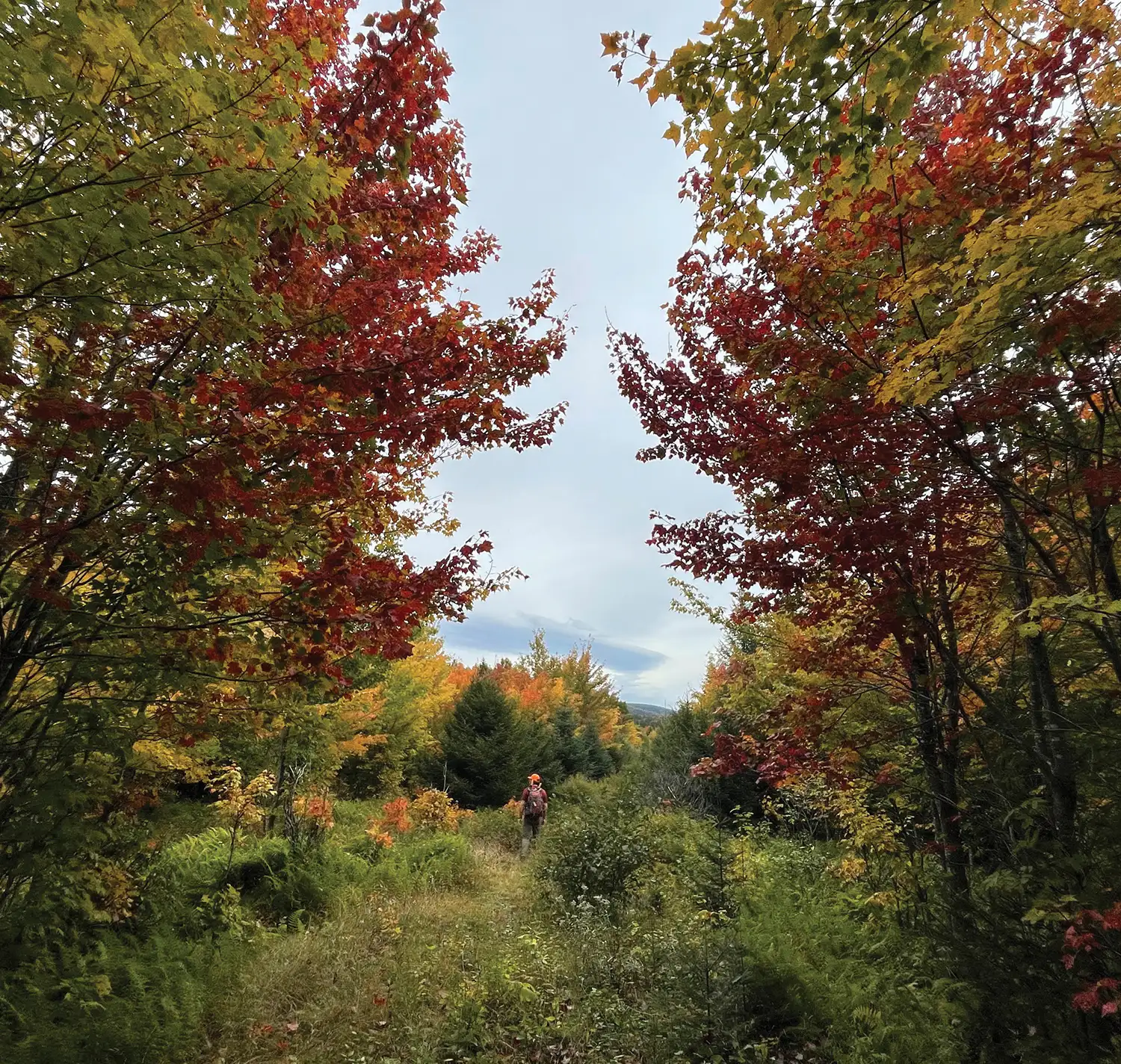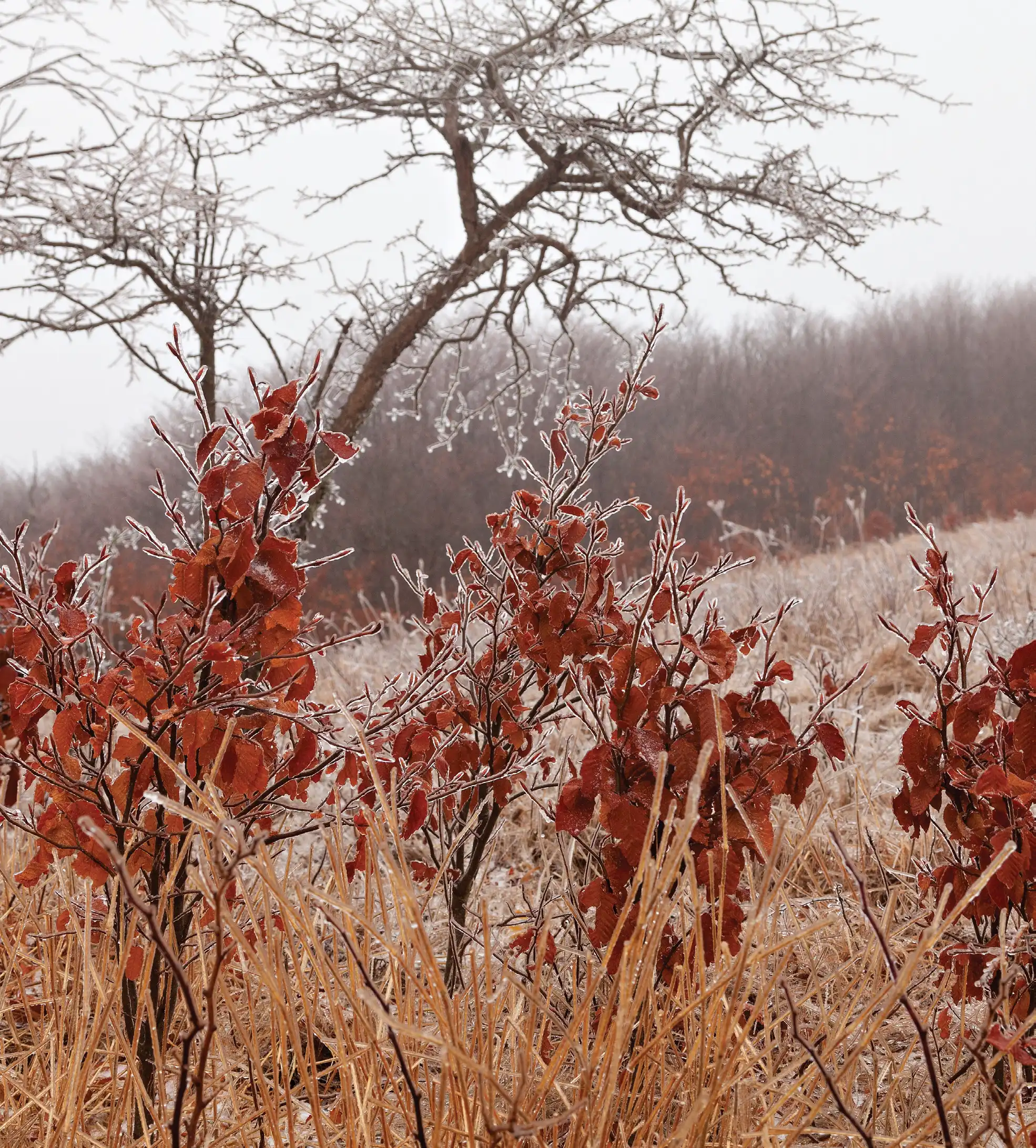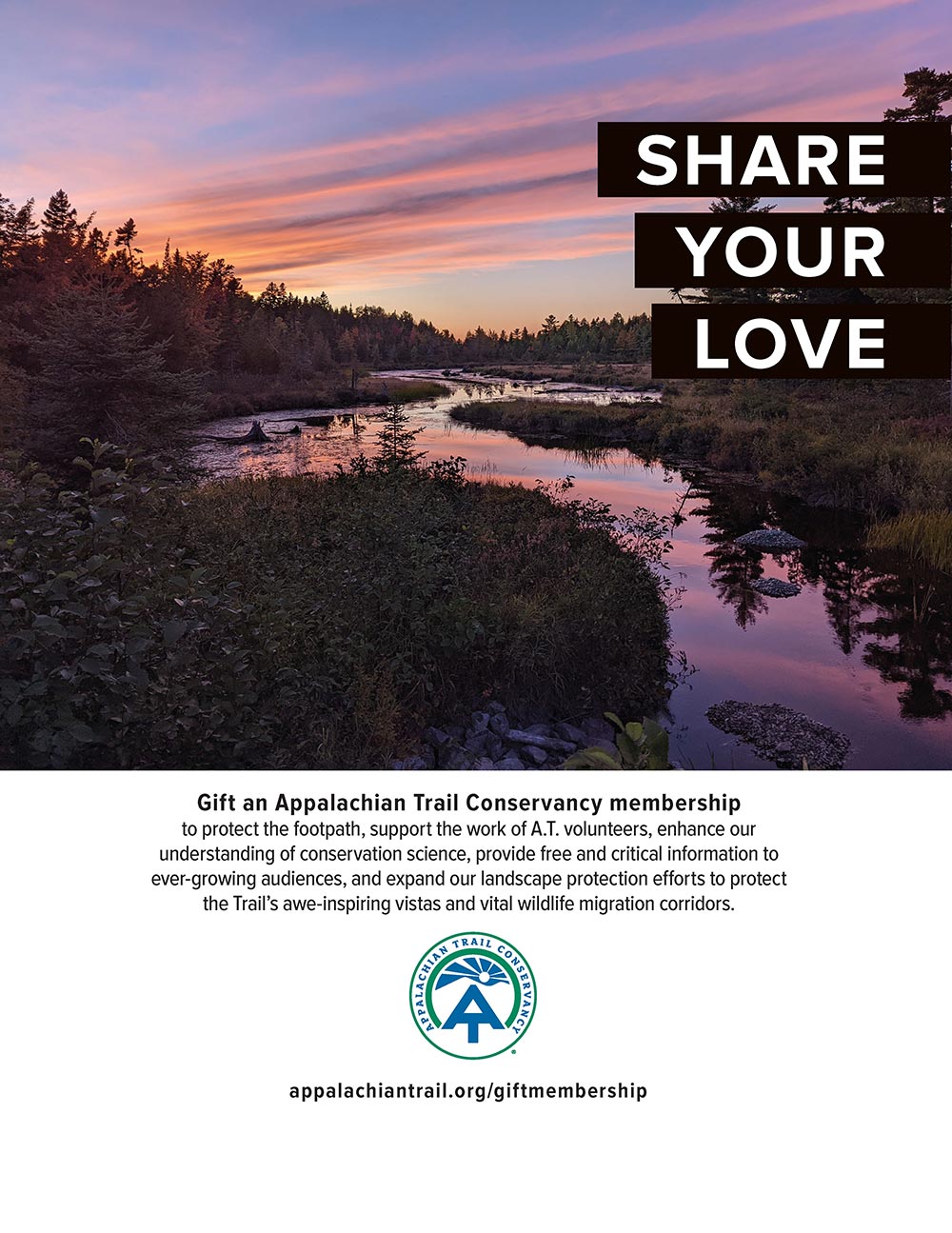A small stand of beech trees with red leaves coated in rime ice captures the often sudden transition from fall to winter. Photo near the summit of Little Hump Mountain, North Carolina, by Daniel Burleson
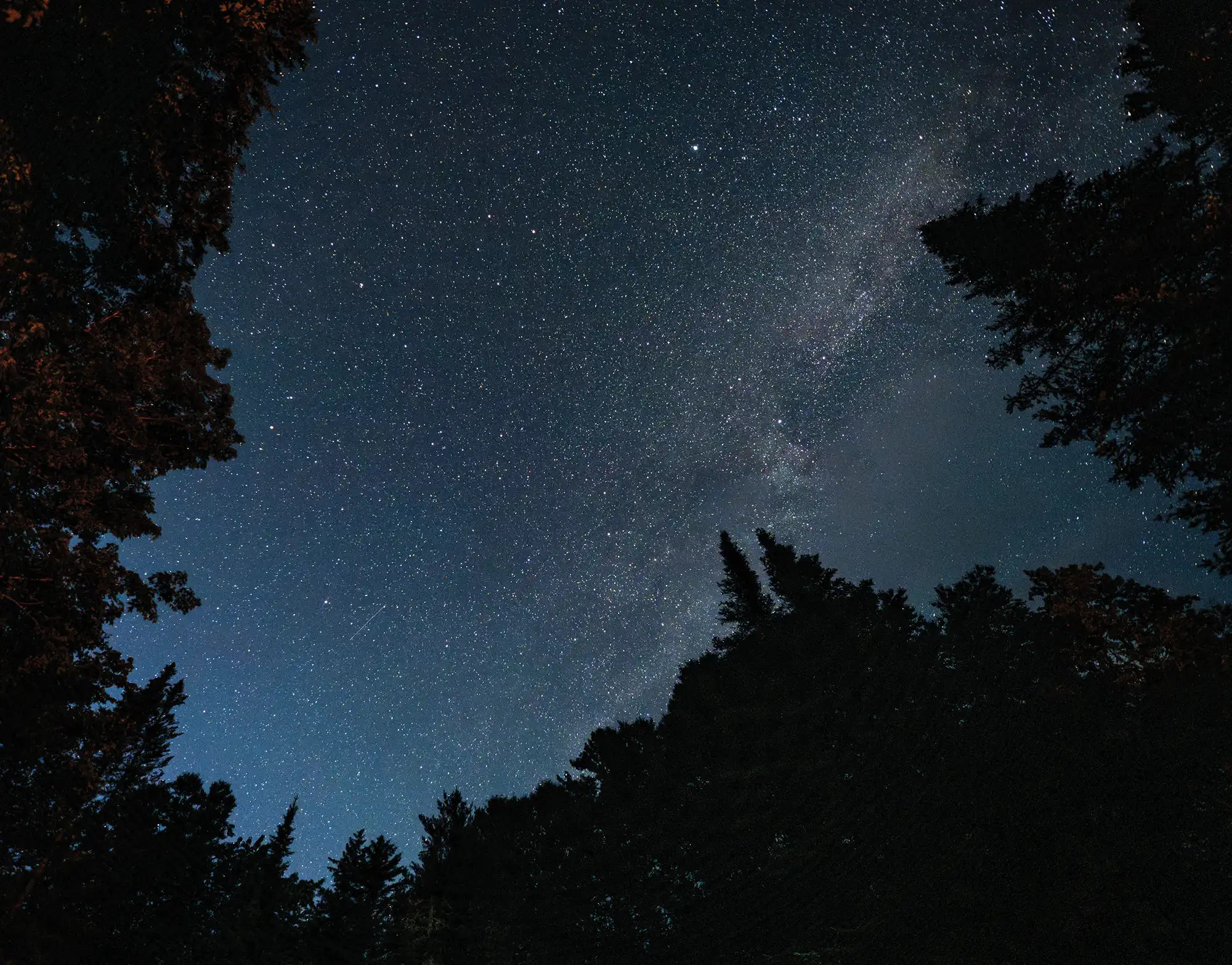
A small stand of beech trees with red leaves coated in rime ice captures the often sudden transition from fall to winter. Photo near the summit of Little Hump Mountain, North Carolina, by Daniel Burleson

ATC Executive Leadership
Sandra Marra / President & CEO
Hawk Metheny / Vice President of Regional and Trail Operations
Marian Orlousky / Acting Vice President of Conservation and Policy
A.T. Journeys
Anne Merrill / Associate Vice President of Advancement
Traci Anfuso-Young / Art Director / Designer
A.T. Journeys is published on matte paper manufactured by Sappi North America mills and distributors that follow responsible forestry practices. It is printed with Soy Seal certified ink in the U.S.A. by Sheridan NH in Hanover, New Hampshire.
A.T. Journeys ( ISSN 1556-2751) is published by the Appalachian Trail Conservancy, 799 Washington Street, Harpers Ferry, WV 25425, (304) 535-6331. Bulk-rate postage paid at Harpers Ferry, West Virginia, and other offices. Postmaster: Send change-of-address Form 3575 to A.T. Journeys, P.O. Box 807, Harpers Ferry, WV 25425.
MISSION
The Appalachian Trail Conservancy’s mission is to protect, manage, and advocate for the Appalachian National Scenic Trail.
Board of Directors
Jim LaTorre / Chair
Nathan G. Rogers / Vice Chair
Rajinder Singh / Secretary
Katherine Ross / Treasurer
Daniel A. Howe / Chair, Stewardship Council
Sandra Marra / President & CEO
Renee Alston-Maisonet
Grant L. Davies
Rita Hennessy
Bill Holman
Roger Klein
John W. Knapp, Jr.
Yong Lee
Gregory Merritt
Eboni Preston
Patricia D. Shannon
Jeri Ward
Greg Winchester
Nicole Wooten
A.T. Journeys is published on matte paper manufactured by Sappi North America mills and distributors that follow responsible forestry practices. It is printed with Soy Seal certified ink in the U.S.A. by Sheridan NH in Hanover, New Hampshire.
A.T. Journeys ( ISSN 1556-2751) is published by the Appalachian Trail Conservancy, 799 Washington Street, Harpers Ferry, WV 25425, (304) 535-6331. Bulk-rate postage paid at Harpers Ferry, West Virginia, and other offices. Postmaster: Send change-of-address Form 3575 to A.T. Journeys, P.O. Box 807, Harpers Ferry, WV 25425.
Whatever the reason, I look forward every year to the first flash of red sugar maples dotting an otherwise green hillside. Or the first chilly breeze that chases me back inside to grab an extra layer before spending time outside. Or the crunch of leaf litter under my boots as I walk along a familiar stretch of Trail.
highlights / events
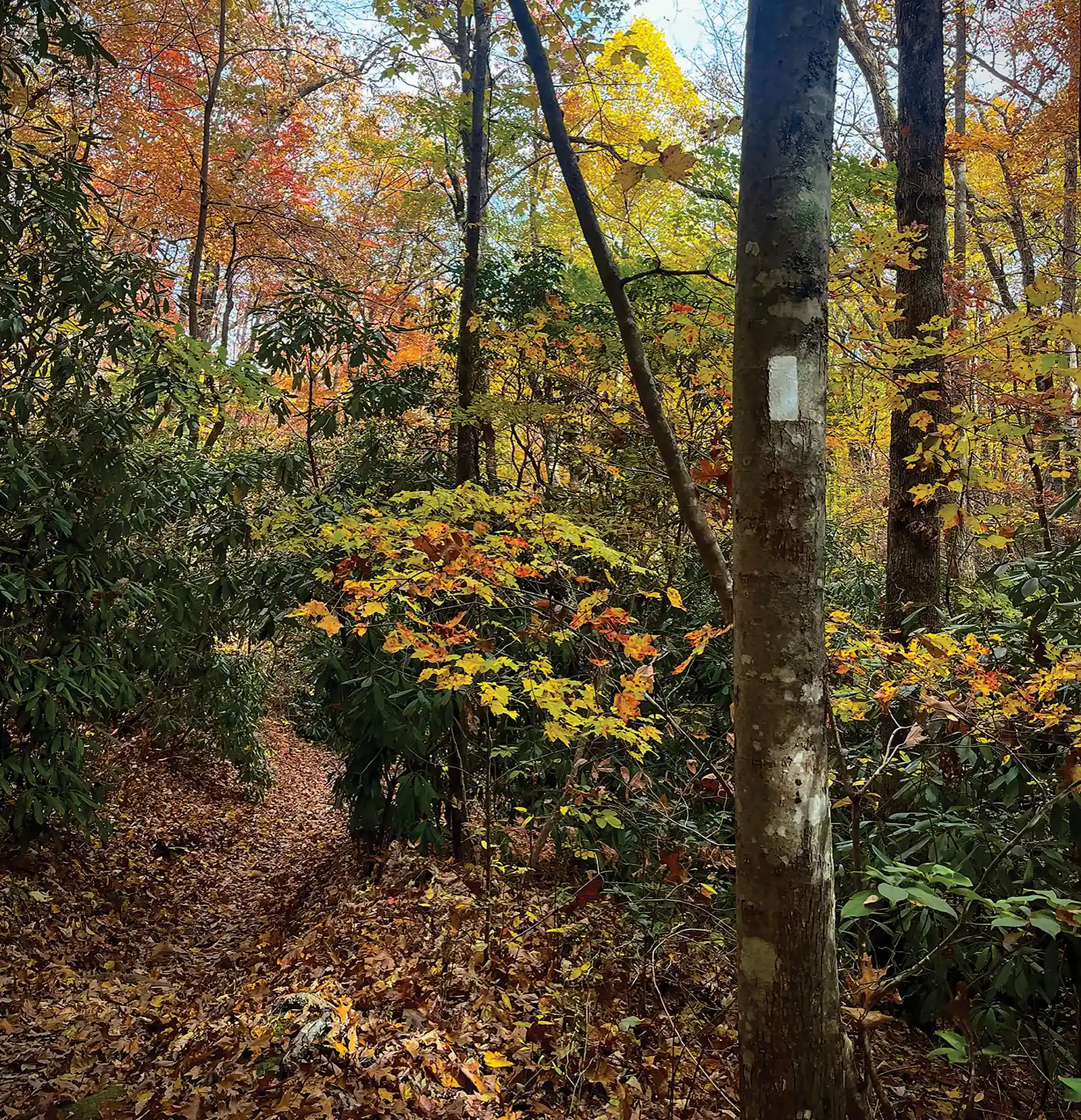
Leaders

The Appalachian Trail Conservancy (ATC) is pleased to welcome Ed Clark as the new superintendent of the Appalachian National Scenic Trail. A veteran of the National Park Service (NPS), Clark has worked at both the park and national level for several decades, building strong public–private partnerships and providing strategic leadership. Clark will be the fifth park manager/superintendent of the Trail since Congress designated it the first National Scenic Trail in 1968.
“I am honored to be selected as the superintendent of the Appalachian National Scenic Trail,” said Clark. “The Appalachian Trail is such a unique and treasured landscape. I am eager to begin collaborating with other federal, state, tribal, and community partners to continue to protect this natural gem. I look forward to meeting the dedicated staff and partners that support the Trail and working to support our shared vision.”
Clark formerly served as the Pacific West Region’s senior project manager supporting complex projects such as Colorado River water issues, Lake Mead water levels, and statewide permitting efforts. From 2014 to 2017, Clark served as the superintendent of Gettysburg National Military Park and Eisenhower National Historic Site, while also serving in key park planning positions.
“As the lead NGO for the management and stewardship of the Appalachian Trail, the ATC is excited to begin working with Ed to implement a collaborative vision for the second century of this beloved trailway,” said Sandra Marra, ATC President and CEO. “More than just a simple footpath, the A.T. and its surrounding landscape promote ecological health and biodiversity, sustainable outdoor recreation economies, and a truly unique recreational experience. Ed brings valuable community engagement experience that will be critical to advancing our collective efforts to protect and maintain this valuable national resource.”
Prior to his post at Gettysburg, Clark served as superintendent of Manassas National Battlefield Park for five years, where he provided service-wide leadership for the Sesquicentennial of the Civil War and the broader Civil War to Civil Rights commemorative efforts. He has also served as the acting associate regional director for operations for the National Capital Region of the National Park Service and the acting national coordinator for National Heritage Areas.
Clark’s other previous assignments include deputy chief ranger at Shenandoah National Park and supervisory park ranger at the Blue Ridge Parkway.
Clark is the successor to Superintendent Wendy Janssen, who retired in December 2022. He began his duties in early October 2023.
In addition to their passion for the A.T. and for outdoor recreation, the following four new board members bring expertise in conservation, legal affairs, marketing, and youth engagement.
- Renee Alston-Maisonet works to connect under-represented youth to the outdoors and careers in conservation.
- Bill Holman is North Carolina State Director of The Conservation Fund, where he is responsible for advocating for conservation priorities in that state.
- Roger Klein most recently served as Deputy General Counsel for a pioneer of smart technology.
- Gregory Merritt has held senior marketing positions at clean-energy firms and other companies seeking to drive new business.
Congratulations, welcome, and thanks to all for your leadership!

Events
“This transformative experience has deepened my commitment to preserving the beauty and heritage of the Appalachian Trail while addressing the need for greater representation and inclusion in the outdoors. I’m excited to join a network of passionate individuals dedicated to protecting this natural treasure and making it more accessible to all,” said Sara Rose Monahan, a 2018 graduate of Villanova University and a participant in the 2023 summit.
Co-sponsored by the ATC, the AMC, and the Wilderness Society, the event had a record number of applicants including a higher number of Black, Indigenous People of Color applicants than previous years. Selected participants received a scholarship covering lodging, meals, and registration costs.
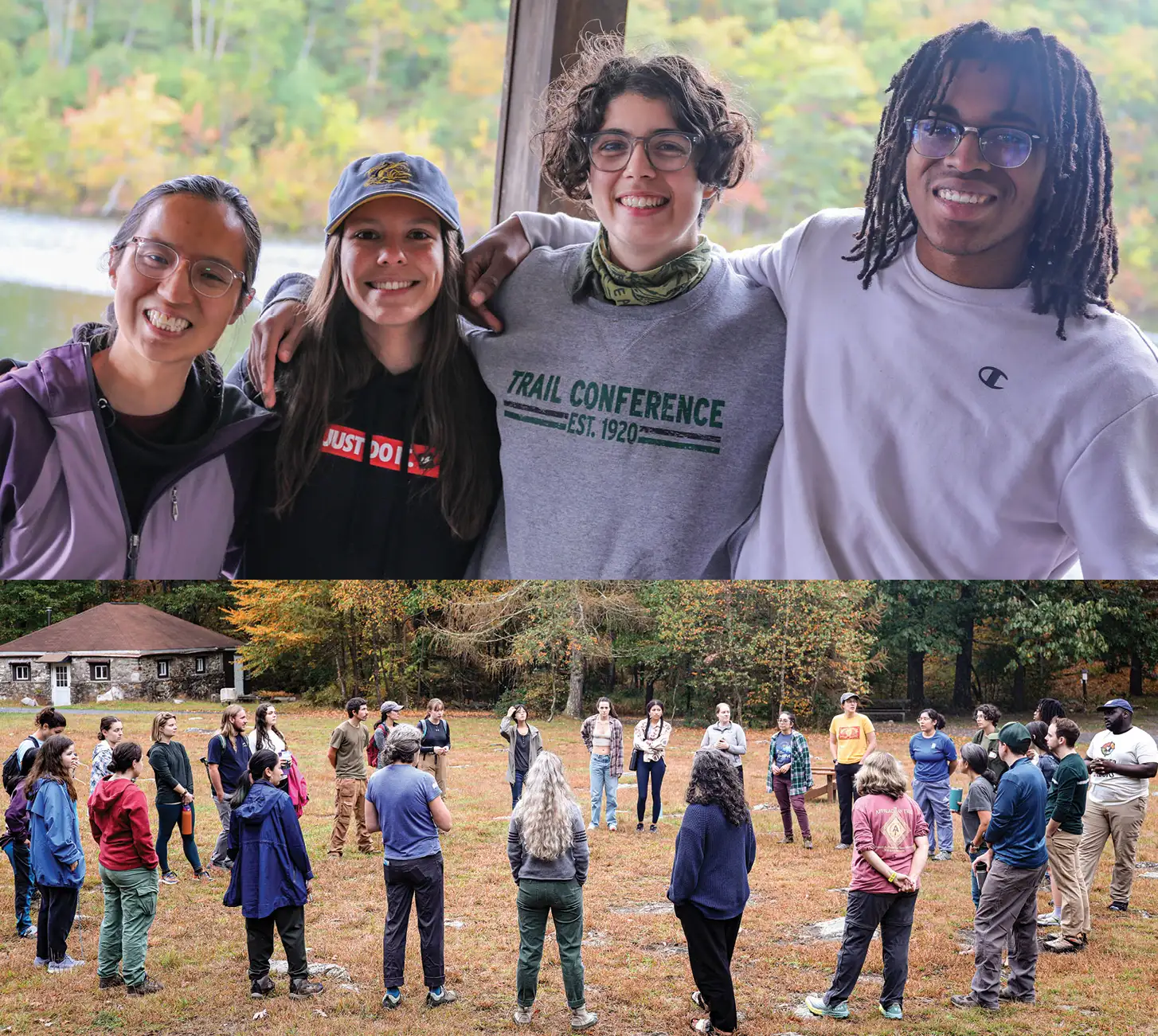
Globetrotting
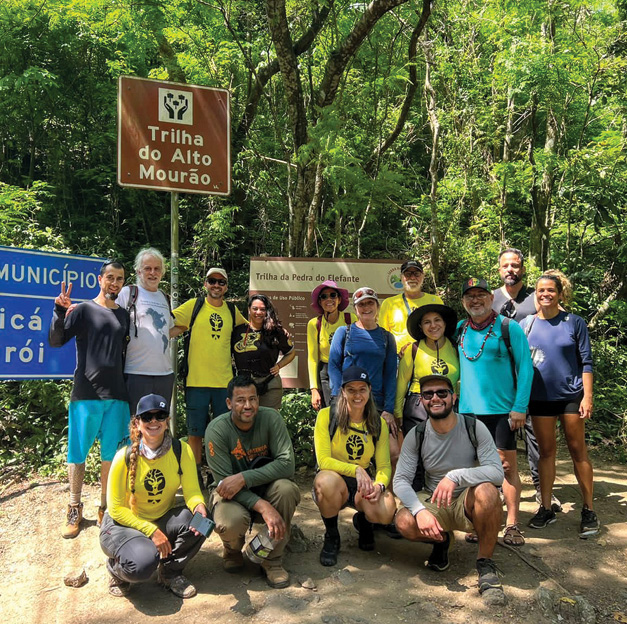
The Appalachian Trail is a model for long-distance trails across the country and around the world. Its distinct structures and wayfinding, unique management system, and reliance on volunteer maintenance have inspired and been replicated by long trails across continents.
But the A.T. doesn’t influence other trails all on its own. ATC staff have played and continue to play active roles in sharing what we have learned over the past 98 years about managing and protecting this iconic public resource. This fall, ATC staff participated in international trail conferences in Brazil and Japan to share some of their experience and expertise.
The Second Annual Brazilian Trails Congress, held in September, was a gathering of representatives from 28 regional trails in South America’s largest country. Through lectures, roundtables, exhibits, and — of course — trail walks, participants shared best practices on caring for and maintaining trails.
In November, ATC staff traveled to Japan for a long-trail forum as well as a trail maintenance symposium. The latter was sponsored by the Shine-tsu Trail Club, with which the ATC has signed a Friendship Trails Agreement to foster the continued exchange of ideas and information.
Googling

On page seven, for example, you learned: “The oldest and most important tradition of the Trail is to leave it just as you found it, allowing everyone to enjoy the same natural beauty.”
Doodles have been featured on the Google homepage for more than 20 years, and since then some 5,000 doodles have educated Google users about a variety of topics, including holidays, historic anniversaries, and the lives of famous artists, pioneers, and scientists. This is the first time the Appalachian Trail has been the subject of a doodle. National parks were honored in 2016, on the occasion of the National Park Service’s 100th anniversary.
To create the doodle, artist Nate Swinehart visited several iconic locations along the Trail, including Clingmans Dome in Tennessee, McAfee Knob in Virginia, and the Hunt Trailhead in Maine, among others. Watercolor paintings and pencil sketches from those visits appear in the doodle, along with some of the plant and animal species that call the Trail landscape home.
During the day the doodle appeared on Google’s homepage, visitors to the ATC’s website increased by 320 percent compared to the average daily number of visitors for the previous nine months of the year. Engagement on our social media channels also increased.
Appalachian Focus
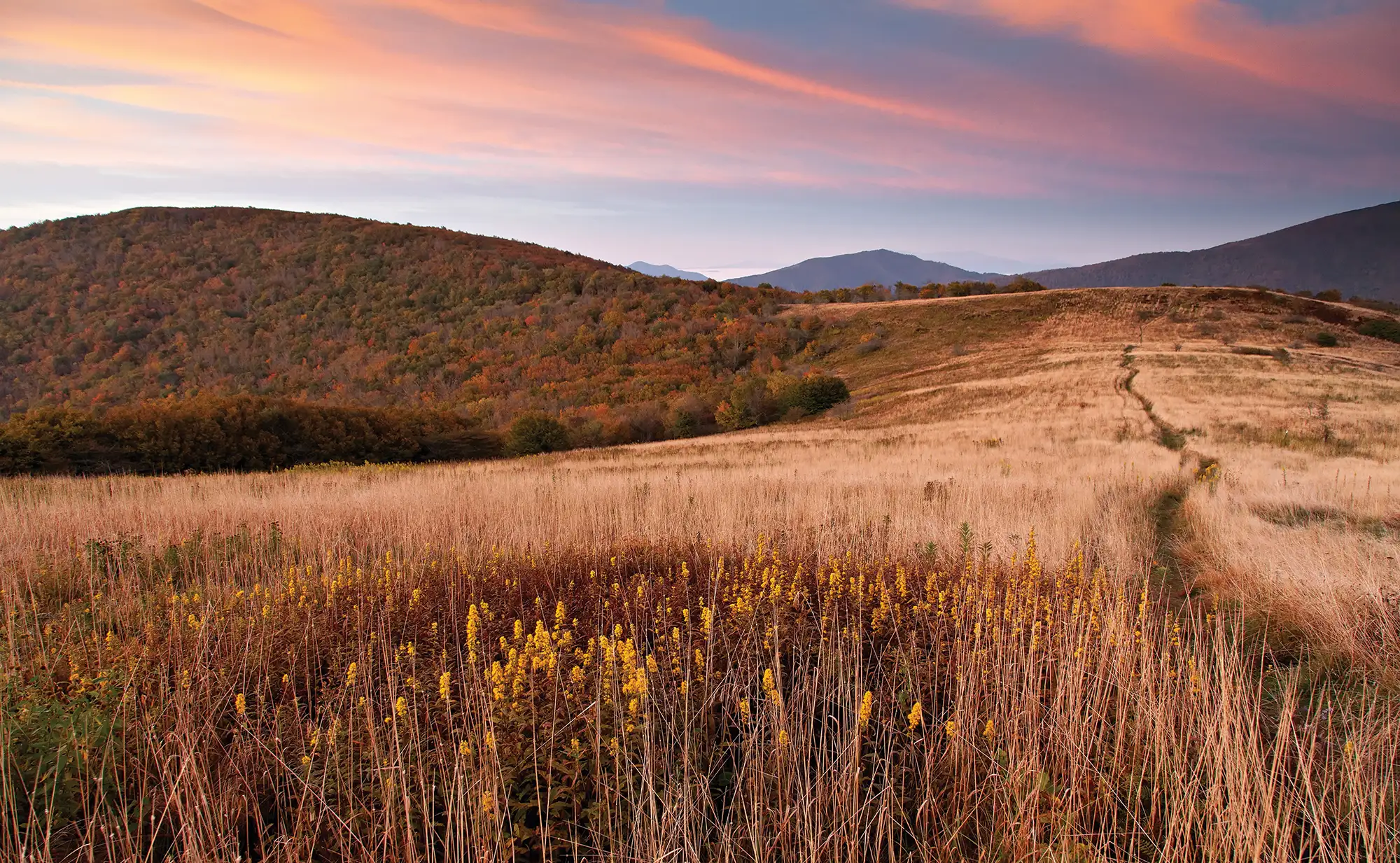
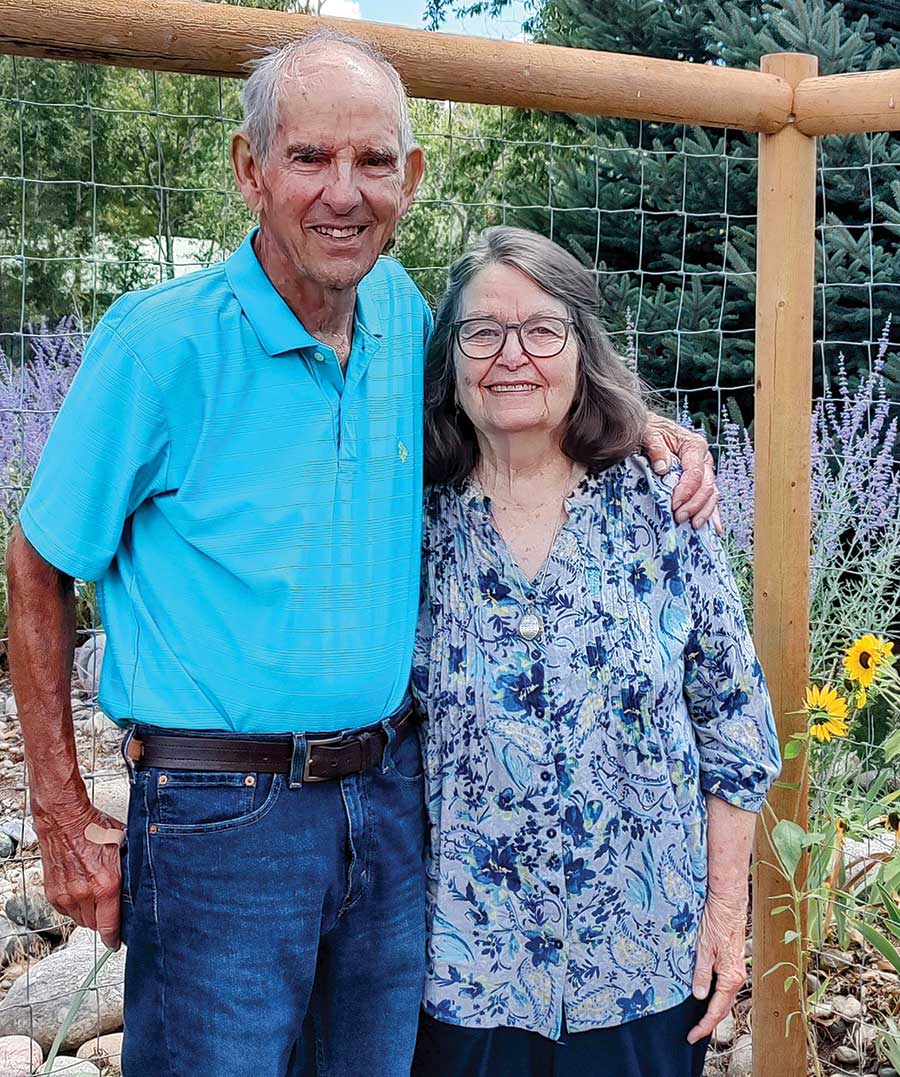
FOR FUTURE
GENERATIONS
A retired thru-hiker and his wife support the ATC’s mission with a gift in their will.
The first person to complete an official thru-hike of the Appalachian Trail famously said that he did so in order to “walk the war out of my system.” Earl Shaffer, who completed his thru-hike in 1948, had served for four years in the Pacific Theater during World War II. At Iwo Jima, he witnessed the death of a childhood friend. For Shaffer, walking the Appalachian Trail was a way of coping with what today we would call post-traumatic stress disorder, or PTSD.
The tens of thousands of people since Shaffer who have attempted a thru-hike, and the fewer than 30,000 who have completed one, have no doubt a wide variety of motivations for undertaking the challenge. Many attempt the feat at moments of transition in their lives, whether from student life to adulthood, from military service to civilian pursuits, or from professional careers to retirement.


have been to Maine’s 100 Mile Wilderness, you have probably crossed over the spot without knowing it: the place where, just beyond the intersection of the Appalachian Trail, Henderson Brook slips quietly under the road. Katahdin Ironworks (KI) is the name of that road: long, dusty, remote; built to transport lumber. You likely traveled the rugged KI road in a vehicle coated with a layer of dirt, or perhaps on foot, sweating under the weight of your backpack. To you, that intersection of water, road, and trail was a blip in time, a link to somewhere else.
To a federally endangered Atlantic salmon, it’s a lifeline.

Where It All Began
How an estate in northwestern New Jersey with ties to the settlement house movement became the birthplace of the Appalachian Trail.

Sometimes
The dictionary definition of a conservancy is an organization designated to conserve and protect natural resources. What sounds simple on paper is, of course, far more complex on the ground — especially for a resource like the A.T., which traverses over 2,198 miles of diverse terrain from marshland to forest, grassy bald to alpine tundra.
- LEADER
$100,000 to $499,999 - Bill McGinnis
- Larry Mulder
- National Park Foundation
- The Powell Family Charitable Trust
- The Volgenau Foundation
- PARTNER
$50,000 to $99,999 - Cornell Douglas Foundation
- Doris Duke Foundation
- Daniel and Laura Gold
- Gold Family Charitable Trust
- National Park Trust
- ADVOCATE
$25,000 to $49,999 - Michele and Dan Coleman
- Sam Ferguson
- Rob* and Catherine Hutchinson
- David Roby
- Robin and Eileen Wood
- PROTECTOR
$10,000 to $24,999 - Anonymous
- Jo Brown
- The Dwight and Serene Q. Collmus Family Fund of The Community Foundation of Frederick County
- Grant Davies *
- Jean Ferlazzo
- James LaTorre *
- Donna and George Lawson
- The Barton J. Ingraham and Gail G. Ingraham Foundation
- Yong J. Lee *
- Robert Leonetti

As these pages attest, the images show the Trail in all its majesty — across all seasons and landscapes, from the southern balds to mountainous alpine areas, from pastoral lands to leafy green forests, from wetlands to rugged outcrops. In addition to the varied landscapes, the photos also point to the rich biodiversity of life along the Trail, from barred owls to salamanders, luna moths to wild ponies, Virginia bluebells to flame azaleas.
Although the 2023 contest has come to a close, we always welcome photo and video submissions via our website: appalachiantrail.org/media-submission-form
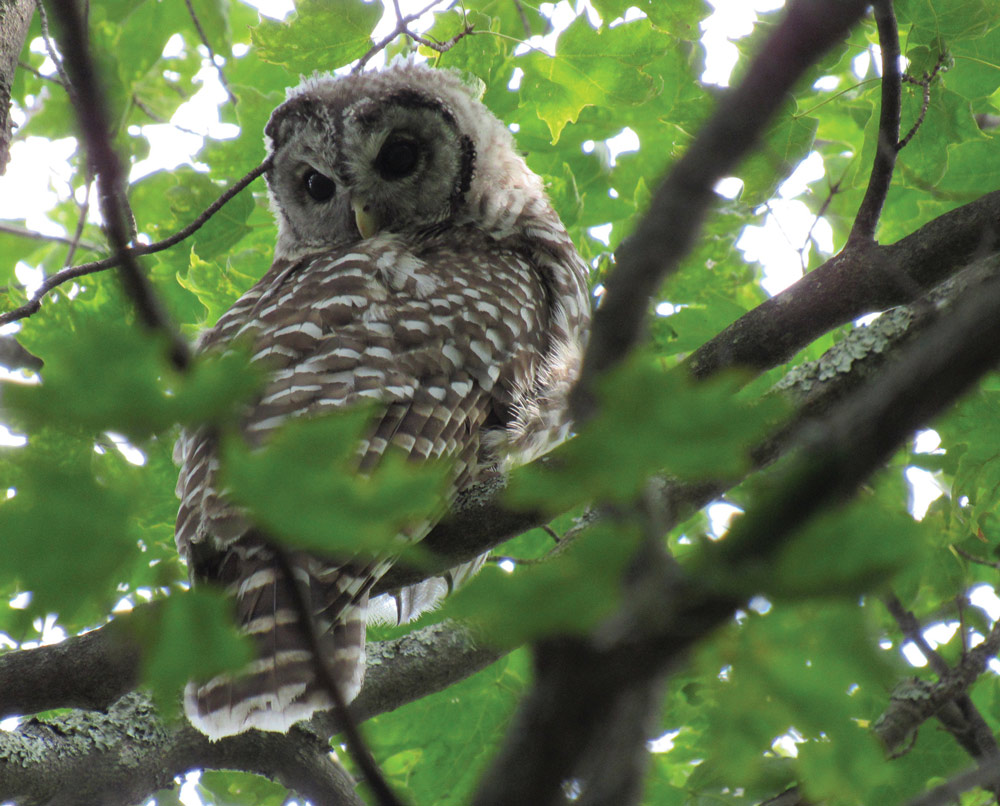

Perhaps that is as it should be. The Appalachian Trail is meant to be a simple footpath through the woods. However, with an ever-changing environment and increased visitor use, maintaining the A.T. is far from simple.
In fact, it takes thousands of people from dozens of organizations, agencies, and other entities to ensure the Trail remains a world-class outdoor recreational experience. I recently had the chance to see this complex cooperative management system in action while overseeing the replacement of two popular shelters in Connecticut.
